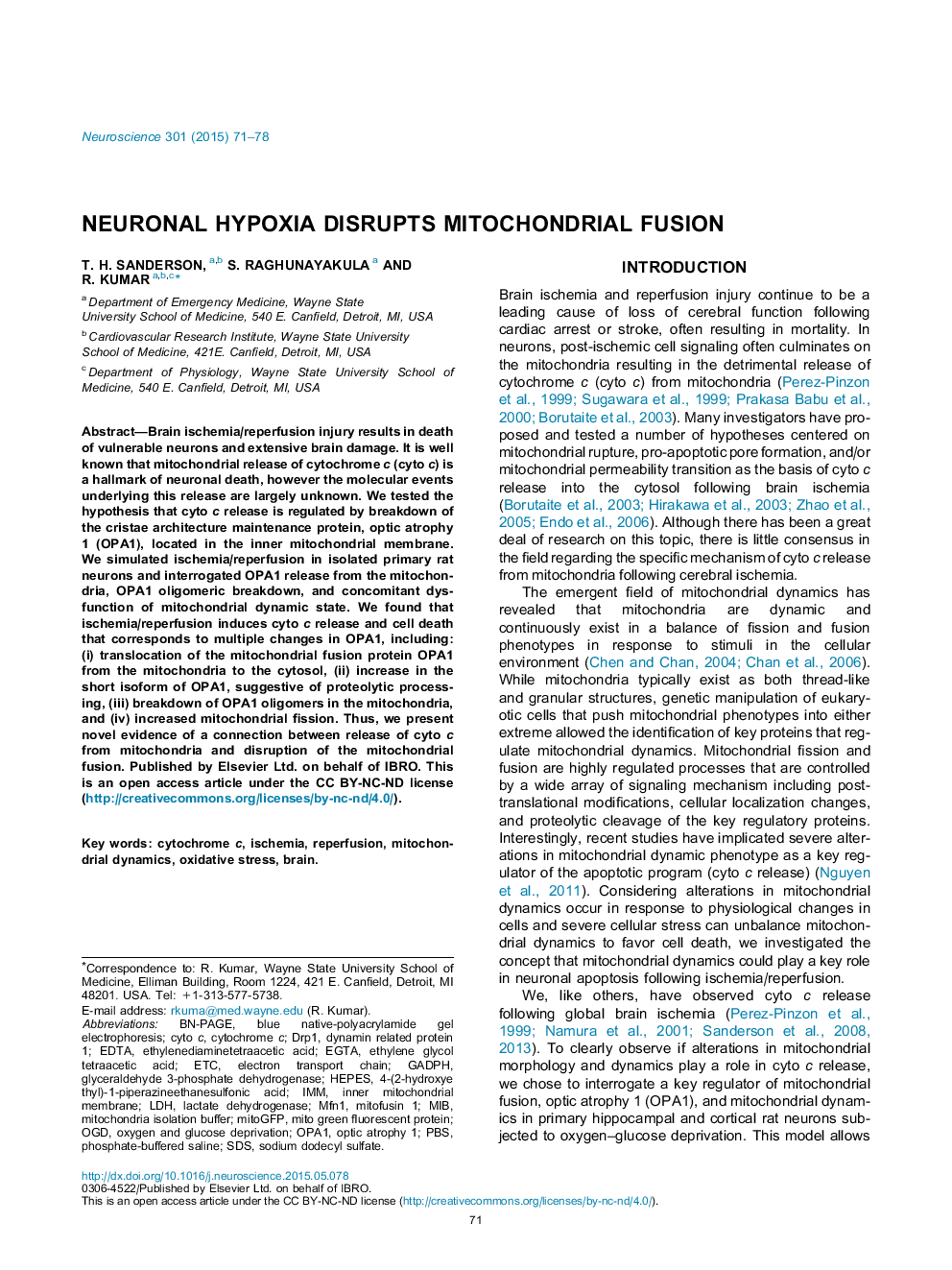| Article ID | Journal | Published Year | Pages | File Type |
|---|---|---|---|---|
| 6272133 | Neuroscience | 2015 | 8 Pages |
â¢In primary neurons, oxygen glucose deprivation results in:â¢Release of OPA1 & cyto c from the mitochondria.â¢Breakdown of OPA1 oligomers.â¢Predominate mitochondrial fission and neuronal death.
Brain ischemia/reperfusion injury results in death of vulnerable neurons and extensive brain damage. It is well known that mitochondrial release of cytochrome c (cyto c) is a hallmark of neuronal death, however the molecular events underlying this release are largely unknown. We tested the hypothesis that cyto c release is regulated by breakdown of the cristae architecture maintenance protein, optic atrophy 1 (OPA1), located in the inner mitochondrial membrane. We simulated ischemia/reperfusion in isolated primary rat neurons and interrogated OPA1 release from the mitochondria, OPA1 oligomeric breakdown, and concomitant dysfunction of mitochondrial dynamic state. We found that ischemia/reperfusion induces cyto c release and cell death that corresponds to multiple changes in OPA1, including: (i) translocation of the mitochondrial fusion protein OPA1 from the mitochondria to the cytosol, (ii) increase in the short isoform of OPA1, suggestive of proteolytic processing, (iii) breakdown of OPA1 oligomers in the mitochondria, and (iv) increased mitochondrial fission. Thus, we present novel evidence of a connection between release of cyto c from mitochondria and disruption of the mitochondrial fusion.
